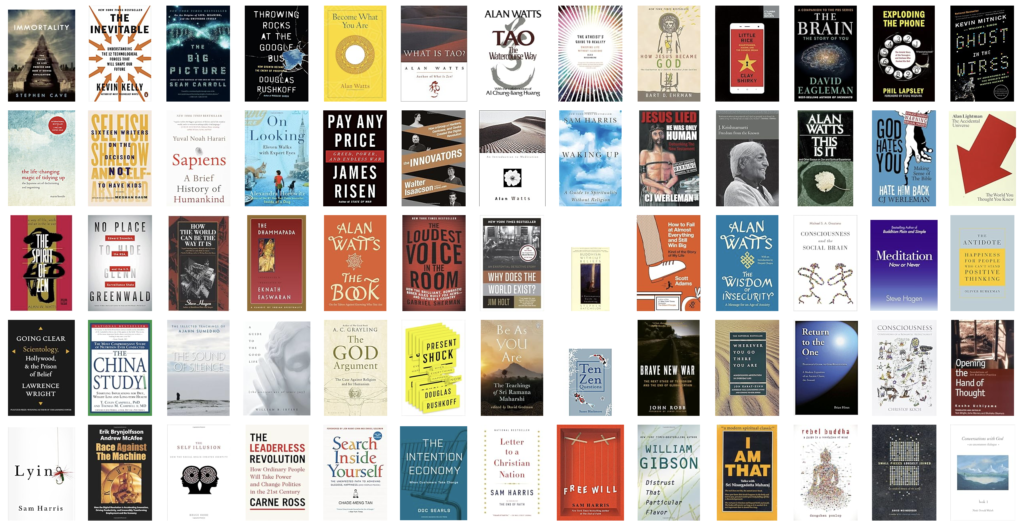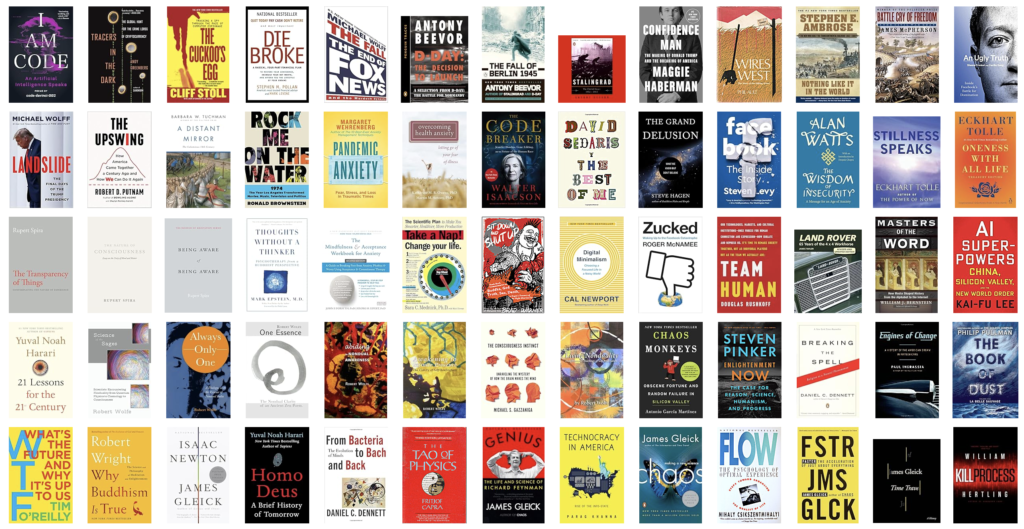

ChatGPT: Based on the covers of the books shown in the images, here’s what I can surmise about the person who has read these books:
1.Diverse Interests: The reader has a wide range of interests, including technology, history, psychology, spirituality, science, and self-improvement.
2.Curiosity About Technology and Its Impact: Books like “The Inevitable,” “The Innovators,” and “AI Superpowers” suggest an interest in how technology shapes society and the future.
3.Historical Interests: Titles like “The Fall of Berlin 1945,” “D-Day,” and “Stalingrad” indicate a fascination with significant historical events, particularly those related to World War II.
4.Spiritual and Philosophical Exploration: The inclusion of books by Alan Watts, Eckhart Tolle, and other spiritual authors suggests a deep interest in exploring philosophical and spiritual ideas, possibly leaning towards Eastern philosophies and mindfulness.
5.Interest in Cognitive Science and Psychology: Books such as “The Brain: The Story of You,” “Consciousness and the Social Brain,” and “The Master and His Emissary” indicate a strong interest in understanding the human mind and consciousness.
6.Self-Improvement and Personal Growth: Titles like “Digital Minimalism,” “The Power of Now,” and “Meditation: Now or Never” point towards an interest in self-improvement, mindfulness, and personal growth.
7.Skeptical and Critical Thinking: Books like “The God Delusion,” “Breaking the Spell,” and “Why Buddhism is True” suggest a tendency towards skeptical and critical thinking, particularly about religion and spirituality.
8.Fascination with Future Trends and Speculative Thinking: Titles such as “Homo Deus,” “21 Lessons for the 21st Century,” and “The Singularity Is Near” imply a fascination with future trends, speculative thinking, and what lies ahead for humanity.
9.Interest in Societal and Cultural Issues: Books like “The Upswing,” “Zucked,” and “Chaos Monkeys” suggest an interest in societal and cultural issues, particularly related to media, technology, and economics.
Overall, this reader appears to be highly intellectual, curious about a broad range of topics, and keen on understanding the world from multiple perspectives, including historical, technological, philosophical, and scientific. They seem to value both critical thinking and personal growth.

